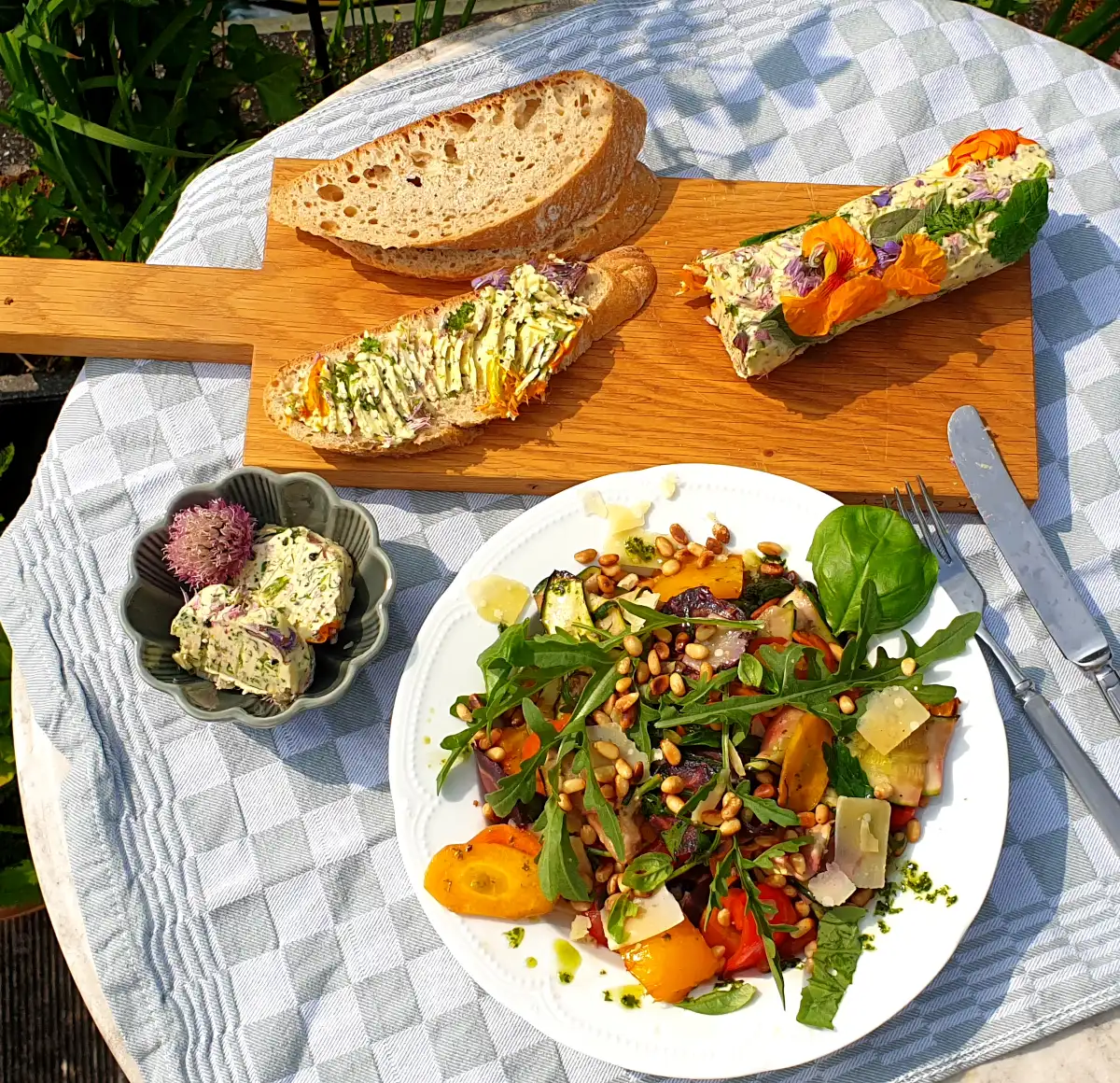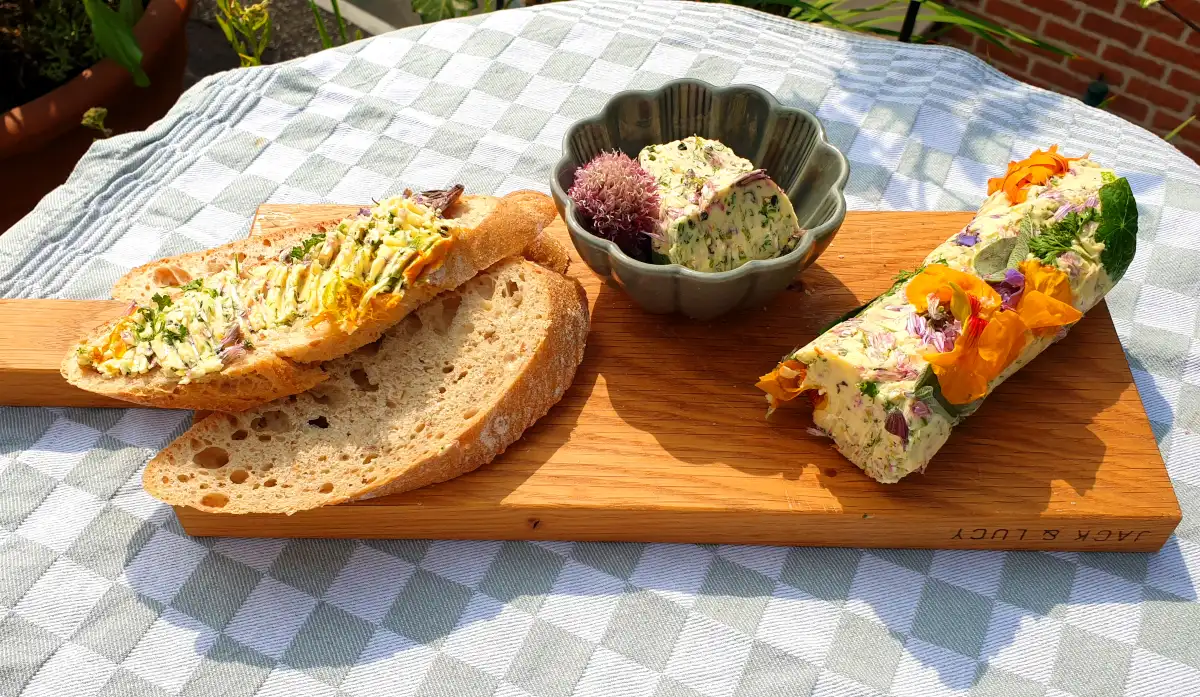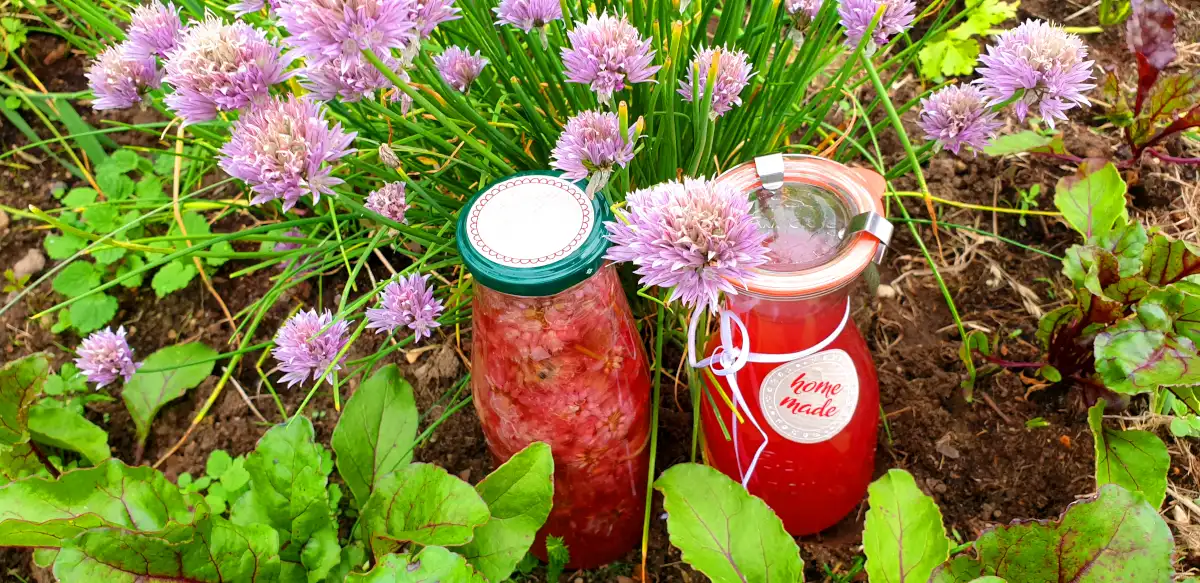Chive blossom butter & pink flower vinegar
- Vegan* - Gluten-free - Lactose-free*
Preparation time: 20 minutes - Difficulty level: easy
Ingredients pink flower vinegar:
- 1 l vinegar of your choice, we use white balsamic vinegar
- 2 handfuls of chive blossoms
Ingredients chive butter:
- 7-12 chive blossoms
- a few stalks of chives, finely chopped
- 250 g soft sour cream butter or vegan alternative
- zest of one organic lemon
- fleur de sel, freshly grated colored pepper
- 1 l vinegar of your choice, we use white balsamic vinegar
- 2 handfuls of chive blossoms
Ingredients chive butter:
- 7-12 chive blossoms
- a few stalks of chives, finely chopped
- 250 g soft sour cream butter or vegan alternative
- zest of one organic lemon
- fleur de sel, freshly grated colored pepper

Chive blossoms not only conjure up their gently oniony aromatic spice in your dishes, their wonderful purple color also enriches every dish, even as a decorative topping on salads and soups.
They flower from March to September and, unlike chives, their taste is somewhat milder and slightly sweet.
We have 2 possible uses for you here. For the vinegar, you will need a large clean jar with a wide opening and several clean glass bottles for bottling, as well as a sieve and a funnel.
Harvest the chive blossoms:
Using a sharp knife, cut the flower stems just above the base and shake them vigorously to release any "inhabitants" from the flowers.
Only collect the bright purple flowers from the stems, as they have the most intense aroma and are not washed so as not to lose this.
It is best to process them directly into chive vinegar.


Preparation of chive vinegar:
For the vinegar preparation, rinse a large jar and lid with boiling water, then fill with the chive blossoms and pour the vinegar over them.
Close the jar and shake.
Now you need a little patience, as the vinegar needs 7-10 days to infuse.
Shake it once a day and put it in a cool, dark place.
You can tell whether your vinegar is ripe by the fact that the flowers have turned pale, as all their strength has been transferred to the vinegar, coloring it pink to pink.
Strain the flowers using a fine sieve and pour your chive blossom vinegar into clean bottles. It is suitable for all salad dressings and of course also replaces the onions.
You can also use the chive stems directly, although they become a little woody as soon as the chives start to flower. Please sort these out
To prepare the chive butter:
Mix all the ingredients together and season to taste.
Decorating tip:
Form a butter roll with various fresh garden herbs & edible flowers from your garden.
We used: sage flowers & leaves, nasturtium, thyme and parsley.
Place the flowers & herb leaves on a piece of baking paper and spread your chive butter on top, roll up, wrap the ends and refrigerate.
Not only will your butter look beautifully colorful, you can also serve it in slices or simply in a nice sealable container.


A little botany:
Chives are a particularly bee-friendly plant, as the flowers contain a lot of nectar.
When cutting the stalks, make sure you leave some for the bees.
The best time to harvest is early in the morning after a rain-free night, when the flowers are least frequented by bees and their essential oils are most intense.
Like most edible flowers, chives flowers contain many secondary plant substances that can have anti-inflammatory and cell-protecting properties. For example, quercetin and kaempferol.
Chives are rich in vitamins and minerals such as vitamin C & K, calcium and potassium.
The stems and flowers have a digestive effect and are used in folk medicine to help with gastrointestinal complaints.
Chives are not only delicious, they also bring additional nutrients and variety to your cooking.